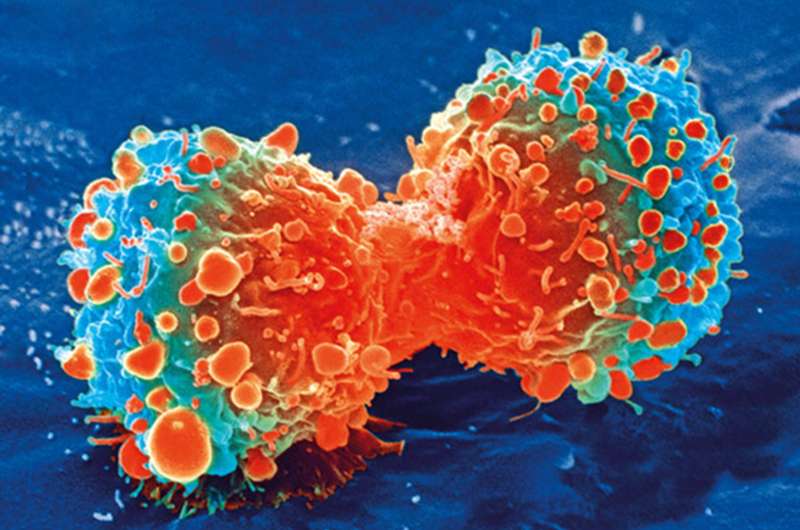Aryl hydrocarbon receptor suppresses immunity to oral cancer through immune checkpoint regulation

A new Boston University School of Public Health (BUSPH) study has identified for the first time how the aryl hydrocarbon receptor (AhR), an environmental chemical receptor, drives immunosuppression in oral squamous cell carcinoma (OSCC)—and that its removal from malignant cells can result in tumor rejection.
Published in the journal Proceedings of the National Academy of Sciences, the study findings provide new insight into the biology of cancer immunosuppression, and identify a new target for cancer immunotherapy treatment.
Immune checkpoint inhibitors (immunotherapy drugs) are some of the most important treatments that have emerged for treating many cancers, including OSCC. Targeting immune checkpoint molecules such as PD-1, PD-L1 and CTLA4 has demonstrated that immunosuppression plays a significant role in OSCC pathology. But immune checkpoint inhibitors are only effective for about 30 percent of cancer patients, so there is a critical need for researchers to identify new immunotherapy targets.
"This study illustrates how studying the basic science of common environmental pollutants' suppression of the immune system can result in a hugely impactful new approach to cancer prevention and immunotherapy," says Dr. David Sherr, study lead author and a professor of environmental health at BUSPH. The study was conducted in his lab, the Sherr Lab, located in the Department of Environmental Health at SPH.
Dr. Zhongyan Wang, a postdoctoral fellow at SPH and a co-author of the study, used gene-editing techniques to delete a single gene that encodes the AhR, an environmental chemical receptor, from highly malignant mouse oral cancer cells.
After these minimally altered cancer cells were transplanted into normal mice, Jessica Kenison-White, first author of the study, measured tumor growth and compared the strength and nature of the immune response to the cancer cells with the ineffective immune response to the unaltered cancer cells, using digital gene-expression technologies and laser-based enumeration of immune cells. Kenison-White was a Ph.D. student at Boston University School of Medicine (MED) and a research scientist at the Sherr Lab during the study.
The researchers found that while unaltered tumor cells overwhelmed the mice within 60 days, AhR gene deletion resulted in zero tumor growth.
This lack of growth, they found, was accompanied by a remarkably robust tumor-specific immune response characterized by a profound decrease in expression of immune checkpoint markers, which mediate immune suppression.
The researchers also discovered that the mice transplanted with AhR-negative oral cancer cells in a kind of vaccine protocol were now 100 percent immune to a challenge with unaltered, highly malignant cancer cells.
"We believe that these findings identified a potential master regulator of multiple immune checkpoints—the suppressive components of the immune system that have been individually targeted in recent years with immunotherapeutics in a way that has revolutionized cancer treatment," says Sherr.
"These results strongly suggest that targeting this master immune checkpoint regulator with specific inhibitors may ultimately prove as effective, or more effective, at enhancing anti-cancer immune responses than any single immune checkpoint inhibitor," Sherr says. "We can see how such a novel drug could be used in a cancer prevention, interception, or treatment modality."
More information: Jessica E. Kenison et al, The aryl hydrocarbon receptor suppresses immunity to oral squamous cell carcinoma through immune checkpoint regulation, Proceedings of the National Academy of Sciences (2021). DOI: 10.1073/pnas.2012692118




















